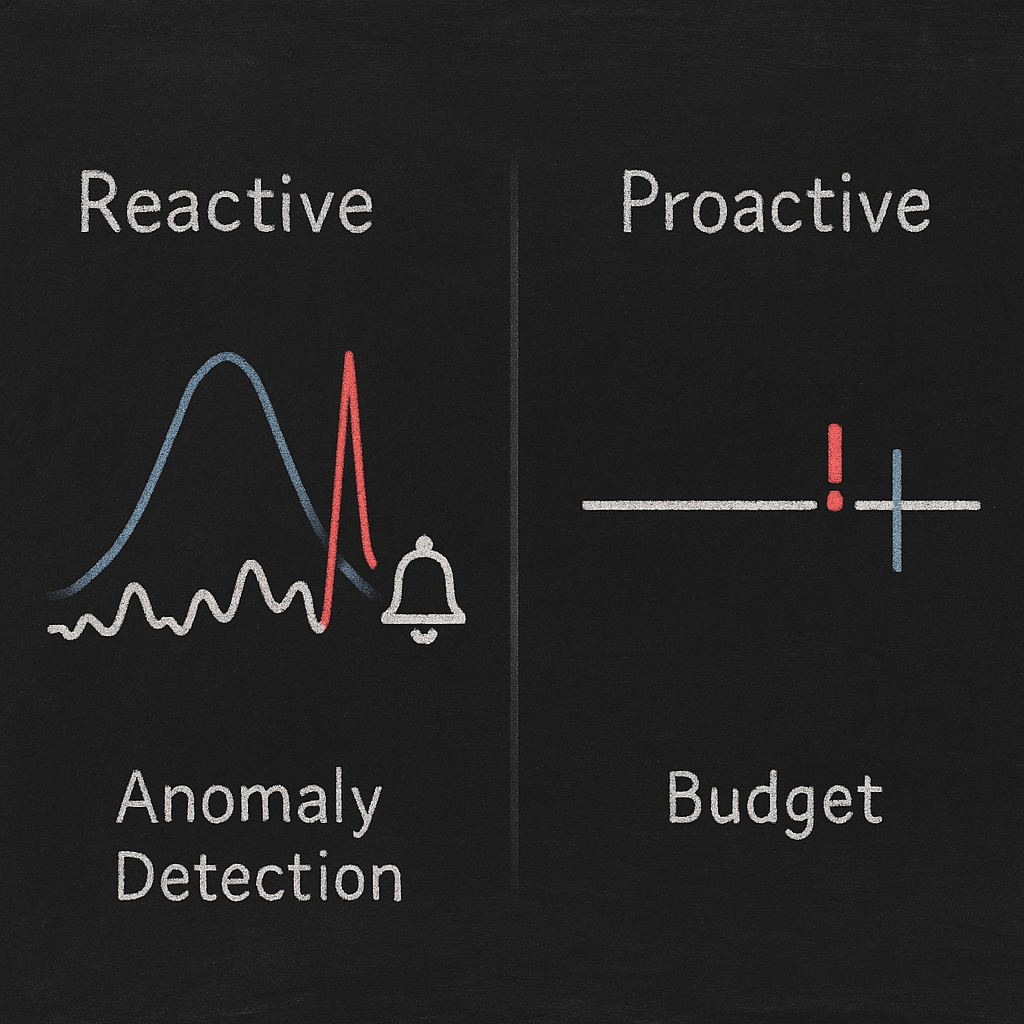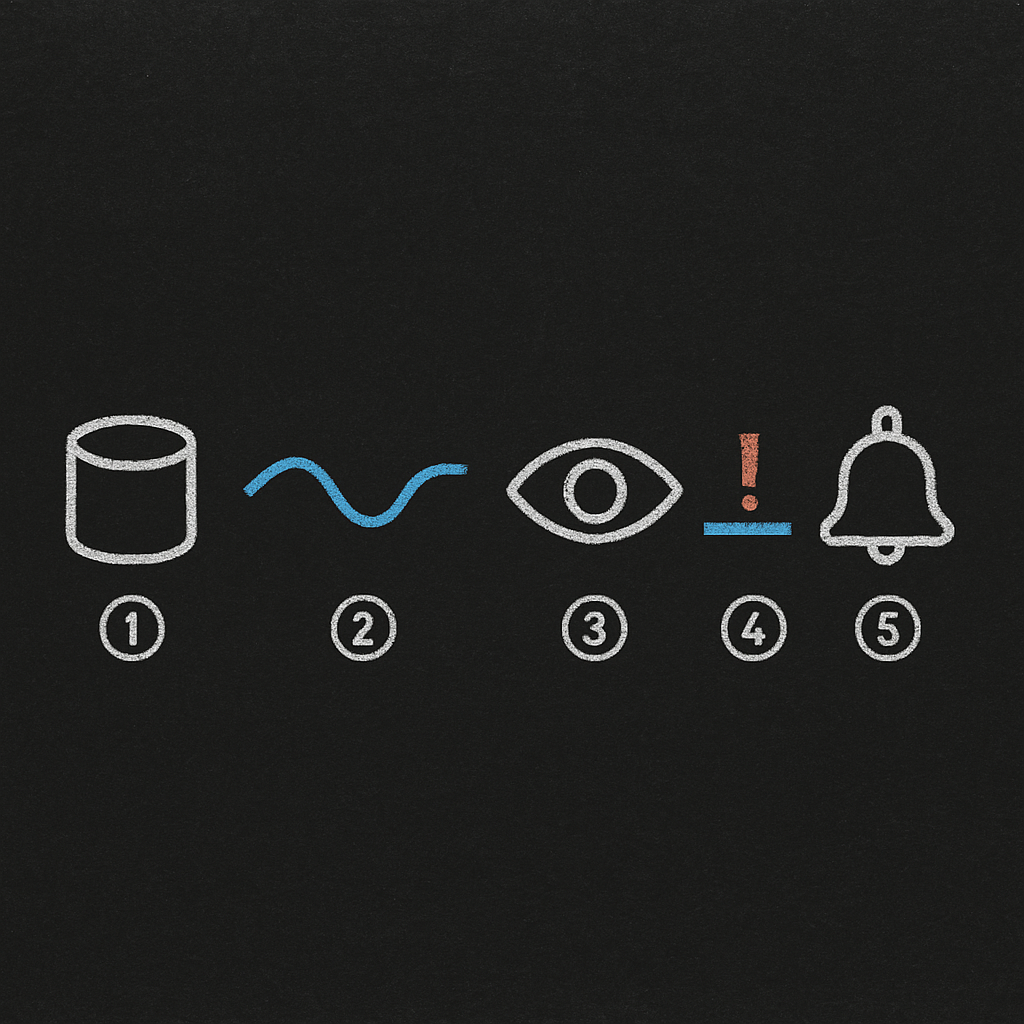AWS Cost Anomaly Detection and Automation: Your Shield Against Unexpected Cloud Spending
Ever received an AWS bill that made you do a double-take? You’re not alone. For many organizations, unexpected cloud costs feel almost inevitable—but they don’t have to be. Effective cost anomaly detection and automated responses can transform these surprises from budget disasters into manageable events.
What Are AWS Cost Anomalies?
Cost anomalies are unexpected variations in cloud spending that exceed historical patterns. They typically manifest as sudden spikes in usage or expenses from new resources that weren’t properly planned or monitored. Unlike gradual cost increases that might indicate business growth, anomalies represent deviations that warrant immediate attention.
A logistics company discovered this firsthand when they detected a 30% spike in their monthly AWS bill. By identifying the runaway resource within 24 hours (rather than waiting until month-end billing), they saved approximately $5,000 in unnecessary compute costs—representing potential annual savings of $60,000 had the issue remained unchecked.
Anomaly Detection vs. Budget Alerts: Understanding the Difference
Many AWS users confuse these two distinct but complementary approaches:
AWS Cost Anomaly Detection is reactive, identifying unexpected deviations after they occur using machine learning to establish baselines and detect unusual patterns. It adapts to changing usage patterns over time and is best for catching unforeseen issues.
In contrast, AWS Budgets is proactive, helping you stay within predefined spending limits by issuing alerts as costs approach predefined budget caps. It maintains fixed thresholds regardless of usage patterns and is best for planning and enforcing spending guardrails.

Organizations implementing robust forecasting alongside budgeting typically achieve 20-30% more accurate financial planning for cloud resources, while anomaly detection provides the safety net for what budgets cannot anticipate.
How AWS Cost Anomaly Detection Works
AWS Cost Anomaly Detection employs machine learning to analyze historical spending patterns, establish baselines, and identify deviations. It intelligently factors in seasonality and growth patterns to minimize false positives.
The detection process works through these key steps:

- Data Collection: The service gathers comprehensive AWS usage data including resource consumption, billing details, and historical costs across services
- Baseline Establishment: Machine learning algorithms analyze historical spending to create a normal usage pattern
- Continuous Monitoring: Real-time spending is compared against historical baselines
- Threshold Calculation: Dynamic thresholds are established based on historical spending patterns
- Alert Generation: When deviations exceed thresholds, alerts are triggered through various channels
For optimal results, AWS Cost Anomaly Detection should be enabled after having at least 2 months of historical data to establish accurate baselines.
Setting Up AWS Cost Anomaly Detection
Let’s walk through the process of configuring this service:
1. Choose Your Monitor Type
AWS offers several monitor types:
- AWS Services: Monitors all services in your account
- Linked Account: Tracks specific member accounts in your organization
- Cost Categories: Monitors custom cost categories you’ve defined
- Cost Allocation Tags: Tracks resources with specific tags
For most organizations, starting with AWS Services monitoring provides the broadest coverage.
2. Configure Alert Preferences
You can customize alerts in several ways:
- Frequency: Choose between individual alerts for each anomaly or daily/weekly digests
- Threshold: Define the minimum dollar amount for anomaly alerts (typically $100+ for production)
- Recipients: Specify who receives alerts via email or SNS
3. Set Up Integrations
For effective team notifications, you’ll want to connect alerts to your collaboration tools:
Slack Integration via AWS Chatbot
- First, set up your anomaly detection monitors and alerts
- Then configure AWS Chatbot:
- Navigate to AWS Chatbot in the console
- Select “Slack” as your client
- Follow the authorization flow
- Choose channels for notifications
- Grant required permissions
- Test your integration by manually reviewing a detected anomaly
4. API Integration for Custom Automation
For advanced users, the AWS Cost Explorer API enables programmatic access to anomaly data:
import boto3
ce_client = boto3.client('ce')
response = ce_client.get_anomalies( MonitorArn='arn:aws:ce::123456789012:anomalymonitor/your-monitor-id', DateInterval={ 'StartDate': '2023-01-01', 'EndDate': '2023-01-31' })
for anomaly in response['Anomalies']: print(f"Impact: ${anomaly['Impact']['TotalImpact']}") print(f"Root Causes: {anomaly['RootCauses']}")Pros and Cons of AWS Cost Anomaly Detection
Advantages
- Machine Learning Foundation: Adapts to your specific usage patterns
- Root Cause Analysis: Identifies specific services and resources causing anomalies
- Zero Additional Cost: Included with your AWS account
- Integration Options: Works with email, SNS, and AWS Chatbot
Limitations
- Detection Latency: Alerts have a latency ranging from 2-24 hours (compared to third-party platforms that can achieve 5-15 minute detection)
- EC2/EBS Considerations: May not catch gradual instance oversizing or EBS over-provisioning
- Limited Automation: Detects but doesn’t automatically remediate issues
- Historical Data Requirements: Needs at least 2 months of data for accurate baselines
Investigating Cost Anomalies: A Practical Playbook
When you receive an anomaly alert, follow these steps:
1. Assess the Anomaly
- Review the detected anomaly details in Cost Explorer
- Determine the affected services and accounts
- Quantify the financial impact
2. Identify Root Causes
For EC2/EBS anomalies, common causes include:
- New instances launched without proper oversight
- Oversized instances with low utilization
- Orphaned EBS volumes after instance termination
- Improper shutdown procedures leaving resources running
Use CloudTrail logs to identify who launched resources and when.
3. Implement Immediate Remediation
Depending on the cause:
- Terminate unneeded instances
- Rightsize overprovisioned instances
- Delete or snapshot unused EBS volumes
- Apply necessary tags for cost allocation
4. Document and Share Findings
- Record the incident, root causes, and resolution steps
- Share learnings with stakeholders to prevent recurrence
Automating Remediation Responses
While AWS Cost Anomaly Detection identifies issues, it doesn’t automatically fix them. Here are patterns for building automated remediation:
Pattern 1: Lambda-Based Auto-Remediation
def lambda_handler(event, sns_message): # Parse the anomaly details from SNS anomaly = json.loads(sns_message['Message'])
# Check if it's related to EC2 if 'EC2' in anomaly['rootCauses'][0]['service']: # Get affected resources affected_instances = get_affected_instances(anomaly)
# Apply remediation based on policy for instance in affected_instances: # Check if instance has required tags if not has_required_tags(instance): # Stop the instance and notify owner ec2_client.stop_instances(InstanceIds=[instance['InstanceId']]) notify_owner(instance)
return { 'statusCode': 200, 'body': 'Remediation complete' }Pattern 2: Step Functions Workflow
Create a Step Functions state machine that:
- Receives anomaly alerts from SNS
- Analyzes the anomaly type and affected resources
- Applies predefined remediation policies based on resource type
- Notifies stakeholders of actions taken
- Updates documentation with incident details
Benchmarking and ROI Examples
Organizations implementing robust cost anomaly detection and automated remediation typically see:
- Detection Time: 2-24 hours with AWS native tools (vs. 24-720 hours with manual month-end reviews)
- Resolution Time: 0.5-2 hours with automation (vs. 4-8 hours with manual processes)
- Cost Recovery: 85-95% of anomalous spending prevented with early detection
A mid-sized SaaS company implemented automated anomaly detection and remediation, resulting in:
- Prevention of $45,000 in annual wasted spend
- 95% reduction in engineering time spent on cost management
- ROI of 15x on their investment in automation tools
Best Practices to Prevent Recurrence
While detection is important, prevention is better. Implement these practices:
- Implement Granular Tagging: Ensure all resources have owner, project, and environment tags
- Set Resource Guardrails: Use AWS Service Quotas and SCPs to limit resource creation
- Establish Environment Policies: Configure different threshold levels for different environments—critical production environments should have lower thresholds (higher sensitivity) than development environments
- Develop Shutdown Procedures: Create automated workflows for proper resource termination
- Layer Multiple Defenses: Combine AWS Budgets (proactive) with Cost Anomaly Detection (reactive)
- Conduct Regular Reviews: Schedule monthly reviews of anomalies to identify patterns
Taking Your Cost Management to the Next Level
AWS Cost Anomaly Detection is just one component of a comprehensive cloud cost optimization strategy. For truly effective cost management, consider integrating it with automated cloud cost governance and optimizing reserved instance purchases.
Organizations using visualization tools like datadog and grafana alongside anomaly detection gain additional insights through custom dashboards that can further enhance cost visibility.
The most successful AWS users implement a multi-layered approach that combines anomaly detection with cost savings via cloud automation to achieve up to 40% in aws cloud cost savings without sacrificing performance.
Want to implement cost anomaly detection through infrastructure as code? Check out our guide on aws cost anomaly detection terraform to automate your configuration.
Unexpected AWS costs don’t have to be a regular part of cloud operations. With proper detection, investigation, and automated remediation, you can transform cost surprises from budget disasters into minor, quickly resolved incidents—letting you focus on innovation rather than fighting financial fires.
Want to see how Hykell can help you eliminate up to 40% of your AWS costs through automation? Reach out today to learn how our performance-based model ensures you only pay when we deliver real savings.
